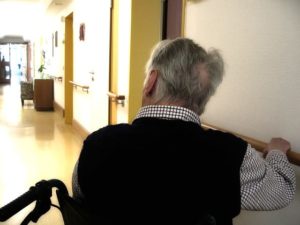
Candida auris is a contagious fungus that spreads rapidly in nursing homes and long-term care facilities, often with deadly consequences.
The Deadly Dangers of Candida Auris
Candida auris, also referred to as C. auris, is a type of fungus that is highly contagious and resistant to anti-fungal drugs currently on the market. C. auris acts more like bacteria than a fungus because it commonly causes outbreaks among large groups of people in enclosed environments. In nursing homes and long-term care facilities, residents with existing health problems, and compromised immune systems are particularly vulnerable to this dangerous fungus that is more deadly than COVID-19.
C. auris was first noticed more than a decade ago in Japan and other countries overseas. However, in recent years, the fungus has been spreading in U.S. nursing homes across the country. In 2019, there were two major outbreaks in California and New York nursing homes with almost 1,200 residents infected. As of December 4, 2020, the Centers for Disease Control and Prevention (CDC) has reported 1,463 cases. While the CDC estimates a 2% death rate for victims of COVID-19, they estimate a 33% death rate for victims of Candida auris. One in three people infected with C. auris dies from complications of the infection.
How Candida Auris Infects Patients
C. auris is a species of fungus that grows on yeast, and one of the few types of fungal infections that can be spread to humans. The fungus can spread easily and quickly by direct contact from patient to patient in healthcare settings such as hospitals and nursing homes. It can also spread by people touching contaminated surfaces such as countertops and bedding.
The fungus is aggressive and often attacks many parts of the body through open wounds, skin, and blood. Nursing home residents on kidney dialysis or with diabetes, blood cancers, skin infections, bedsores, breathing tubes, feeding tubes, and catheters are especially vulnerable to deadly C. auris infections.
A nursing home abuse lawyer often sees cases of C. auris caused by unsanitary conditions and lack of preventive measures. When an outbreak occurs, cleanliness, sanitary measures, and washing of bed linens and towels are essential to prevent the spread of the fungus. Nursing homes can be held liable for resident injuries and deaths caused by unsanitary conditions, improper care, and negligent actions.

